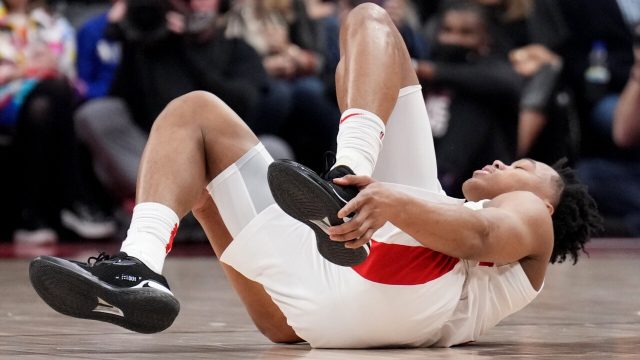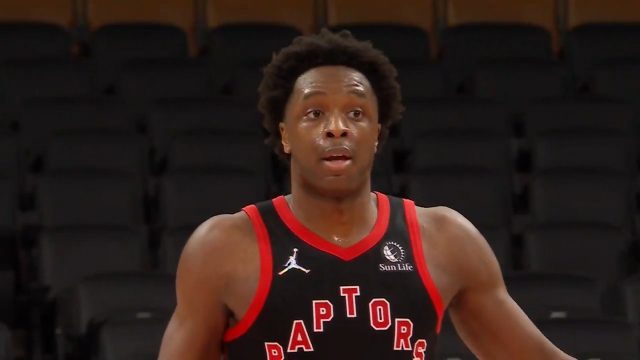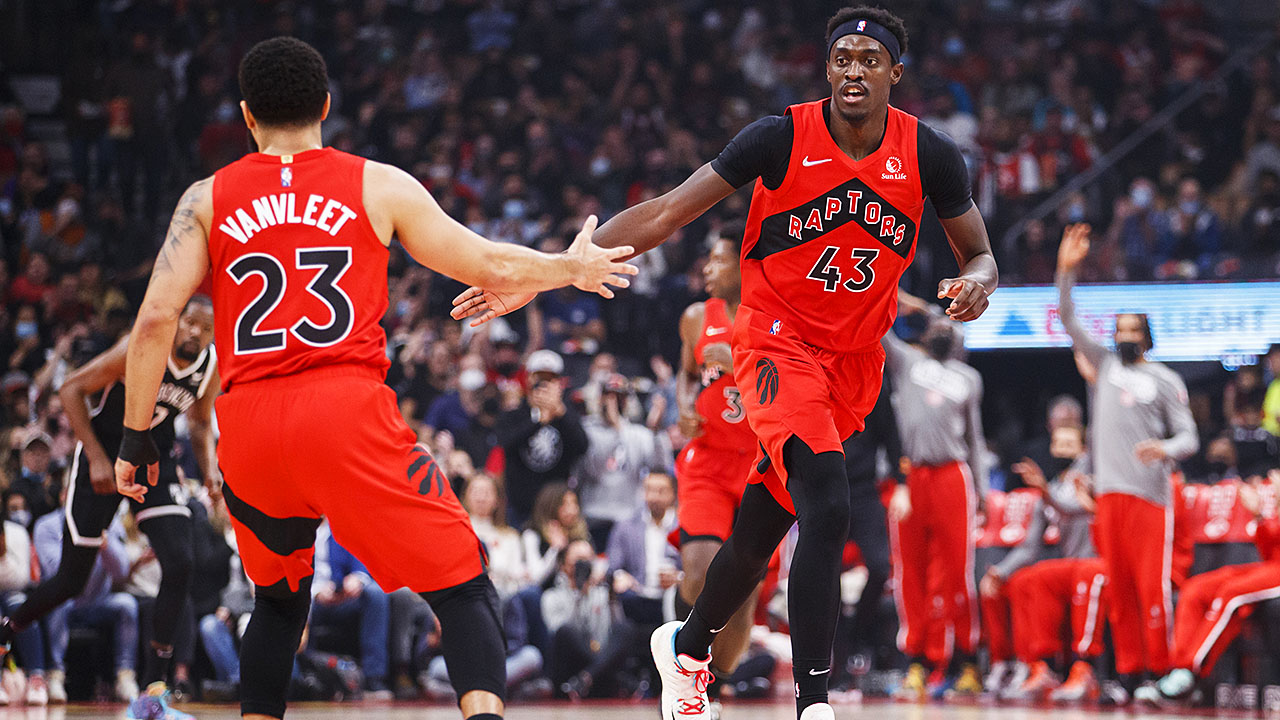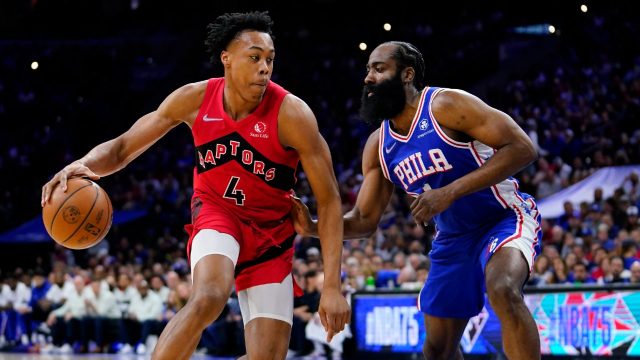
And finally, it’s time for some Toronto Raptors NBA basketball. For a while there it seemed like Raptors seasons never ended, be it the 2019 championship run that went well into June or the way the pandemic required the following three seasons to be crammed into two. Off-seasons were short and the next game never seemed all that far away.
With the NBA getting back to a more regular schedule in 2021-22 and the Raptors being eliminated in the first round by Philadelphia in April, it’s been five months between gatherings, making it the longest off-season in five years.
As the team holds their media day in Toronto on Monday before heading west to Victoria for training camp, here are five storylines worth following as they get back to work in advance of the 2022-23 season opener when they host the new-look Cleveland Cavaliers on Oct. 19.
1. What has changed?
Not that much. There has been plenty of change by teams around the Raptors in the Eastern Conference and Toronto was adjacent to rumours of potentially significant changes, going back to the week leading up to the draft when O.G. Anunoby was attached to the Portland Trail Blazers. The Kevin Durant trade rumours followed and there was speculation about Toronto being interested in Rudy Gobert and Donovan Mitchell as well, as the Utah Jazz tried to drum up interest in their fire sale.
But in the end, the Raptors have stood pat, mostly, with the free agent signing of Otto Porter Jr. projected to be the most significant change to their rotation. As they head into training camp the Raptors are returning 14 players from last season who account for 96 per cent of the minutes played on a 48-34 team that finished fifth in the Eastern Conference.
According to NBA.com’s John Schumann, no team in the league has had less roster turnover. What will that mean when the ball goes up? At the very least that should make for a smooth pre-season and ideally a fast start in what is projected to be a very competitive conference.

2. Have the Raptors improved enough?
Clearly, we can’t know until they play the games, but even as much as Toronto may have over-achieved a year ago (or at least blew past the oddsmakers’ over-under win projections), there are plenty of reasons to believe Toronto has another level to get to even with the roster as constructed.
The lowest of the low-hanging fruit might be some consistent health from Anunoby. The burly wing looks like he should be unbreakable, but between bad luck and circumstance he has only played more than 70 games once in five seasons — and that was as a rookie. He is coming off consecutive seasons missing 29 and 34 games, respectively.
If Anunoby — the Raptors’ most important individual defender and among their most reliable spot-up threats — can dress for 70+ games, Toronto should benefit significantly. Other reasons for optimism are that Pascal Siakam is coming off a full and healthy off-season and should get off to a much faster start than he did a year ago after off-season shoulder surgery. If he starts the way he finished last season (23.8p/8.8r/5.6a from Dec.1 on) as he surged to all-NBA honours, Toronto should be in good shape.

Another wild card is Precious Achiuwa, who morphed from awful, offensively, over the first couple of months of the season (38 per cent shooting in October and November, and barely a 50/50 proposition inside five feet) to quite useful, as he shot 39 per cent from three on nearly four attempts a game after the all-star break. If that version of Achiuwa comes out of the gates, the Raptors’ belief that standing pat was the path to improvement would be even more likely to be justified.
3. How does Scottie Barnes follow up his rookie season?
The rookie-of-the-year from a season ago would seem a very safe bet to take another big step in year two, given that he had just turned 20 years old when he put up a do-everything 15.3p/7.5r/3.5a line while helping lift the Raptors to fifth place in the East after a not-so-encouraging 14-17 start.
The real question is how much better Barnes can get and how quickly? Five months is a long time to train when you’re barely 20 years old and even incremental gains in strength, ball-handling or spot-up shooting could pay massive dividends for an athlete with Barnes’ talent and drive. That he’s such a unique player, who can contribute as a low-touch role player (he was the only player in the NBA to average at least 15/7/3 with a usage rate below 20 per cent) and yet clearly has the physical ability and basketball IQ to handle a much bigger load makes his season even more difficult to project.
If Barnes simply does what he did last season but with some added perimeter shooting (his 30.9 per cent three-point shooting is one obvious area for improvement) the second-year star from Florida would remain a key cog on a winning team, which would be great, most can agree. If Barnes compliments his improved shooting with some tighter ball handling and a punchier approach on offence, combined with the defensive growth it’s safe to expect just with experience, the Raptors could have a third all-star in their line-up sooner than later.
4. Can Raptors find a way to improve shooting?
The Raptors shot the ball poorly last season. In a vacuum, it’s hard to imagine how they were even competitive. Toronto was 27th in eFG (effective field goal percentage) which folds three-point shooting (the Raptors were 20th at 34.9 per cent) and two-point shooting (28th at 50.3) together.
Good teams typically shoot the ball well — the top five teams in eFG last season averaged 53 wins while the bottom five (the Raptors included) averaged 30. Toronto overcame their crappy shooting by taking more shots, which they managed by ranking No. 2 in both offensive rebounds and opponent’s turnovers.
Can the Raptors improve their shooting, collectively, while maintaining their disruptiveness defensively and hustle on the glass (though presumably with more makes their offensive rebounding totals might suffer)? That would go a long way towards an improved overall product.
Signing Porter (a career 39 per cent three-point shooter) should help their cause. Similarly, upticks from the likes of Barnes and Achiuwa would be welcome. But the biggest factor will likely be if Fred VanVleet can shake off a poor finish to last season (he was 40.1 per cent from three before the all-star break and just 29.1 per cent after) and Anunoby can shoot closer to the level he did at in the previous two years (.584 and .580 eFG) compared to last season (.526). Even if Toronto could establish itself as a league-average shooting team, the rest of their package would make them a very difficult out in the East.
5. Which players will step up?
It’s been a little while since the Raptors’ player ‘development system’ graduated a significant rotation player to the big team. With five players on non-guaranteed deals competing for two open roster spots, the pressure on some of them to prove they are worth continued investment is ramping up.
As any Toronto fan knows, it was the team’s ability to gain significant contributions from the likes of VanVleet (undrafted); Norman Powell (picked 46th overall) and Siakam (27th) that helped them become an elite team. Chris Boucher (undrafted) was another find, though he might fall into the late bloomer category. But over the past two seasons, the pipeline has been a bit dry.
Malachi Flynn (30th overall) has been underwhelming heading into his third season and the jury remains out on the likes of Justin Champagnie (undrafted ) and Dalano Banton (46th) as they head into their second seasons. Achiuwa (taken 20th by the Miami Heat in 2020) has certainly exceeded expectations so far, but for an organization that takes player development seriously and expects to find jewels in the rough, having one of Flynn, Banton or Champagnie become the next Raptors player development story would be a welcome return to tradition.







